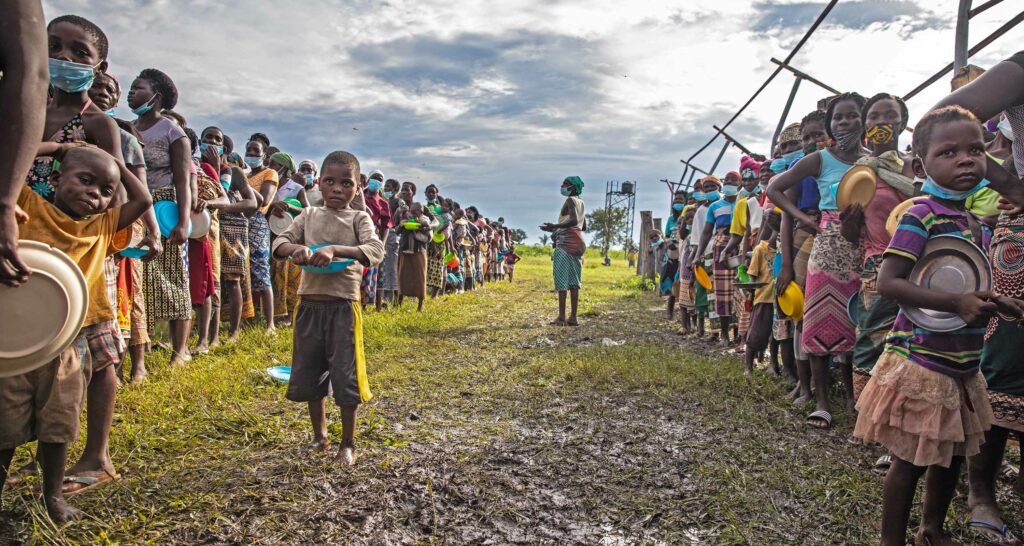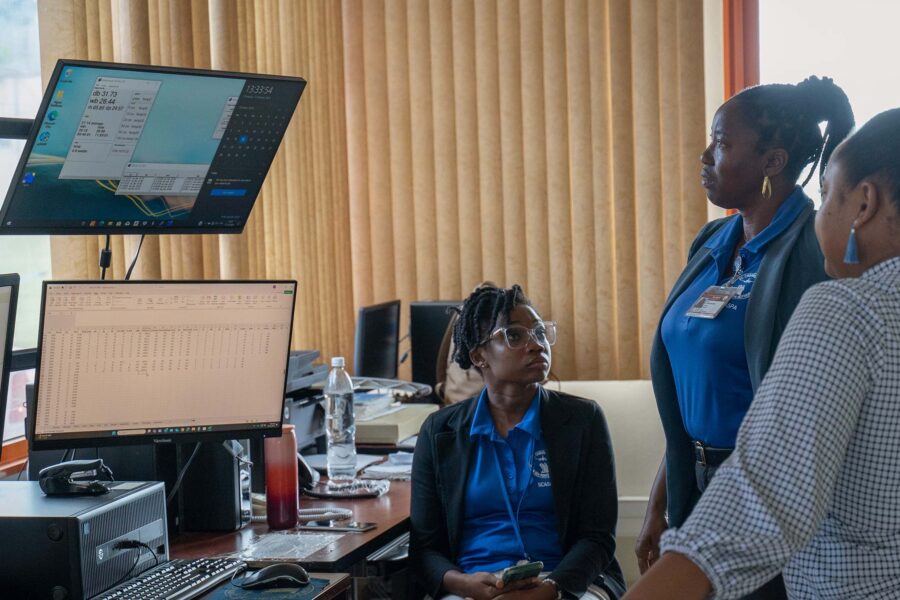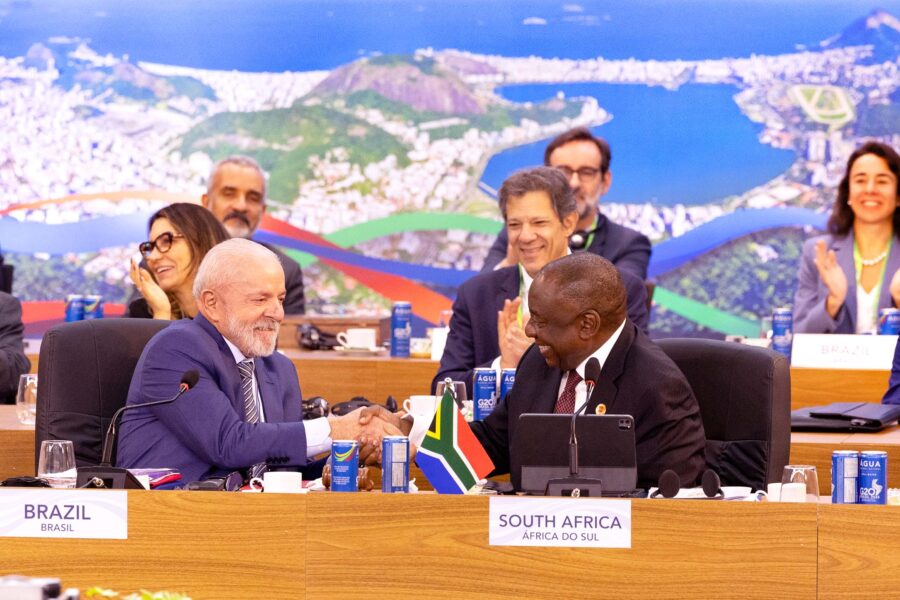Climate exodus? Protecting vulnerable communities in a warming world
How do we protect the ever-increasing numbers of people forced to abandon their homelands due to the devastating impacts of our warming planet?
Climate — Global

We are now firmly on the front line of the global climate change crisis. In the words of United Nations Secretary-General António Guterres: “The era of global warming has ended; the era of global boiling has arrived.” And this has direct consequences on migration. Rich or poor, countries across the world are experiencing and having to manage the movement of millions of people linked to sudden disasters and slow environmental degradation.
A new normal?
Disasters that displace millions of people generate news headlines almost every day. In 2022 alone, over 32 million people were newly displaced by sudden disasters such as storms, cyclones, and floods. Disasters occurred in both developed and developing states. No country is immune to them, and no country can afford to ignore their impacts on the movement of people.
In South Asia, 1.7 million people were displaced by Cyclone Mocha. Storm Daniel wreaked havoc across the Mediterranean in early September, resulting in devastating loss of life and the displacement of 40,000 people in Libya alone. In Canada, in the month of August, 168,000 people were evacuated due to wildfires, the highest figure ever recorded for the country. In Europe, Italy reported its highest disaster displacement figures in more than a decade, as storms and floods hit in April.
Many communities still experience prolonged hardships linked to displacement that occurred in previous years. In Pakistan, for example, displaced communities were still recovering from the 2022 monsoon floods when heavy rains hit in June 2023. This led to an increase in waterborne and vector-borne diseases. Already vulnerable people experienced new displacement.
Slow changes, big impacts
The climate crisis also has insidious and less visible impacts on where, how, and why people move.
In some parts of the world, climate impacts slowly change the environment people live in. Some places are becoming too hot or too cold for humans to survive, seas are rising, and land is degrading. This erodes people’s livelihoods, but also their health and their ability to remain in their homes. For many, this means migrating from countryside to cities to look for jobs as agricultural productivity drops, as seen in many sub-Saharan African countries. For others, it means relocating with their entire community away from receding coastlines, as seen in island states in the Pacific.
Slow changes in the environment alter the traditional patterns of mobile communities. We see, for instance, pastoralists leaving the northern Sahel earlier in the season, as rainfall patterns change. These changes can in some cases create conflicts with sedentary communities, as seen in Niger. And soon we might see stateless people, as some small islands slowly become unhabitable.
In most parts of the world, sudden disasters and slow-onset impacts come together, often with devastating impacts for people who might be forced to move to protect their lives and livelihoods. The cost of immobility should also not be underestimated. In some cases, communities and individuals are trapped and cannot move out of risk’s way, due to poverty or lack of social networks.
What lies ahead?
What lies ahead of us is not yet written. We can still choose to develop the policies and implement the programs that will shape the next decades.
1. Early action on climate adaptation is vital to offer people dignified choices
When and where it is still possible, strengthening climate adaptation and scaling up prevention, preparedness, and risk reduction measures increase people’s resilience to climate shocks and contribute to sustainable development. These offer people the choice to stay and live dignified and safe lives in their areas of origin.
2. In cases where climate impacts are irreversible, migration needs to be considered within loss and damage plans and policies
The current global negotiations on loss and damage finance offer the international community the chance to create a new climate finance instrument. This new fund can help fill existing gaps and address some of the harmful climate impacts on migration, including by facilitating planned relocation of communities away from danger zones.
3. We need to remember that migration can be an opportunity for countries and individuals
Well-governed migration contributes to human and economic development, including through the USD 647 billion sent in remittances in 2022. To deliver on the promise of migration, governments should look at offering regular migration pathways to populations living in areas most exposed to climate change. This includes labor migration opportunities that support income diversification and boost skills in countries experiencing labor shortages.
Better evidence, more inclusive cooperation
To achieve the above, we need stronger data and stronger partnerships. Evidence and data are needed to help decision-makers respond to current challenges. But we need to look beyond the present and the immediate future and ensure that evidence and data inform anticipatory action. Only then can we avoid the worst of future impacts.
Developing solutions should involve every segment of society, including mobile populations, women, indigenous communities, and youth. With their voices at the table, the international community can develop policies and programs that are connected to the realities on the ground. We don’t yet fully comprehend how technological innovations such as artificial intelligence can help address climate impacts on migration. Stronger partnerships with the private sector can help unlock this potential.
The linkages between climate change and migration are complex and far-reaching. Every single Sustainable Development Goal (SDG) is of relevance. For instance, achieving Goal 15 (life on land) can help agricultural communities find alternatives if they do not want to migrate from rural to urban areas. On the other hand, achieving Goal 11 (sustainable cities and communities) can help those who have chosen to migrate to cities live safely and access new educational and work opportunities.
Implementing the SDGs, but also the Paris Agreement on Climate Change and the Global Compact for Safe, Orderly, and Regular Migration, is key to translate global commitments into action that positively changes the lives of communities and individuals on the ground. We cannot afford to fail.





